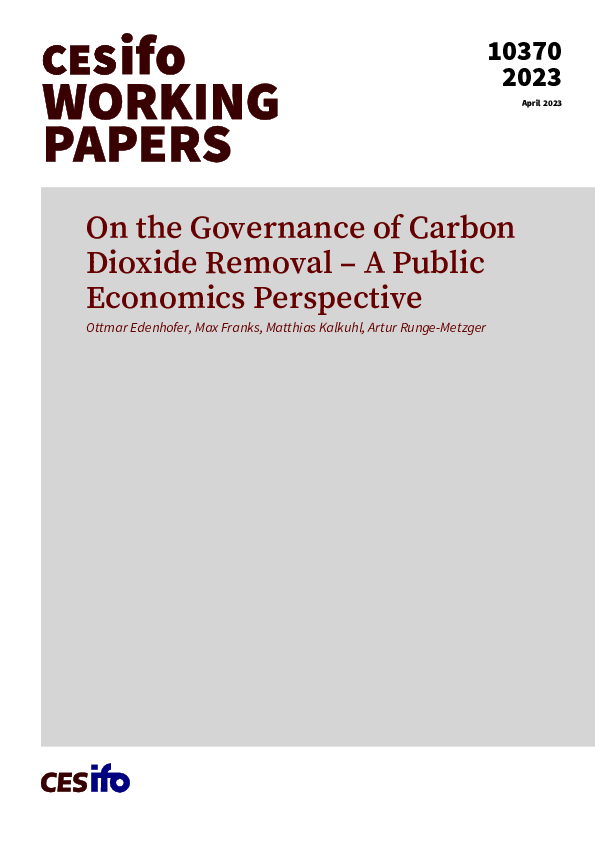On the Governance of Carbon Dioxide Removal – A Public Economics Perspective
CESifo, Munich, 2023
CESifo Working Paper No. 10370

This paper highlights the importance of carbon dioxide removal (CDR) technologies for climate policy. We first describe their role in iconic transformation pathways and discuss removal costs and storage duration of different technologies. Based on economic principles, we characterize optimal removal flows and reservoirs for non-permanent removals. Furthermore, we discuss different pricing regimes that achieve an optimal allocation under different information and liability conditions. Notably, seemingly cheap removal technologies in the land sector can indeed be very expensive when increasing opportunity costs and and impermanence are appropriately accounted for. The use of non-permanent removal – though to a certain extent economically optimal – creates high liability to firms and regulators that warrants a careful and deliberative risk management. Based on these insights, we discuss how policy makers can embed the CDR option in the EU’s policy architecture. There are four key tasks for regulating bodies to ensure an optimal governance: the management of the net carbon emission cap; support for research, development and diffusion of CDR technologies; certification of the quality of removals; management of the liability implied by non-permanent CDR. We propose that three new institutions, a European Carbon Central Bank, a Carbon Removal Certification Authority and a Green Leap Innovation Authority, are established to carry out these tasks.
Public Finance
Energy and Climate Economics